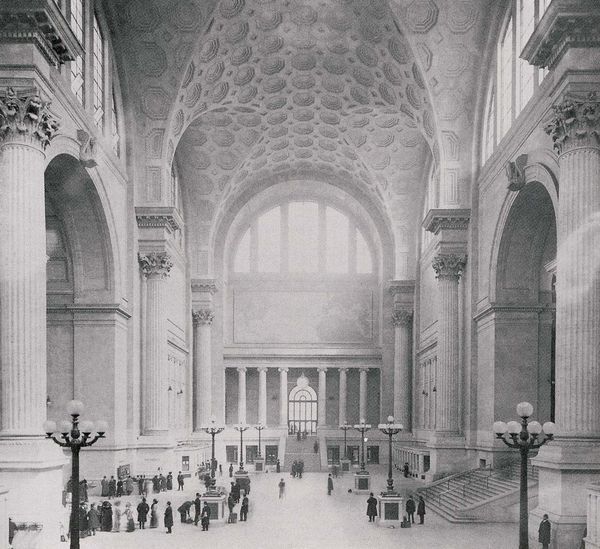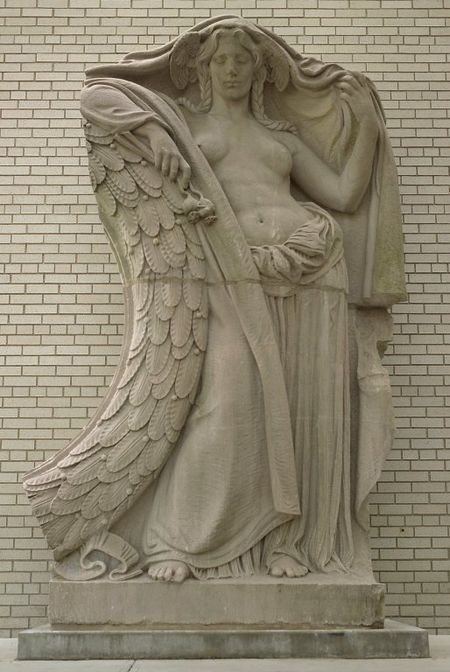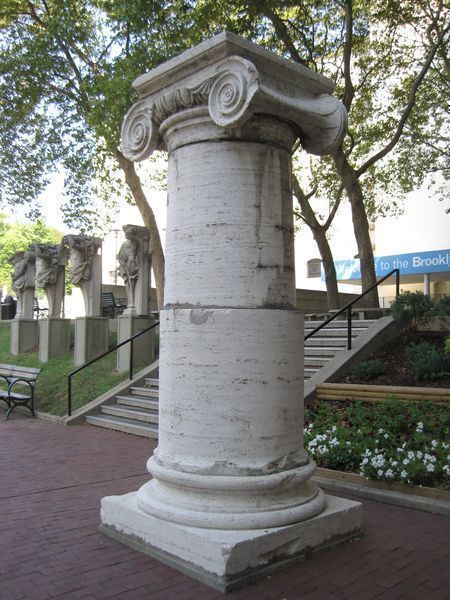Remembering Penn Station
New York history buffs will be interested to know that this month, September 2010, marks the 100th anniversary of the opening of Penn Station. No, not the subterranean labyrinth that we now know as Penn Station—that one opened in 1968—but the magnificent Beaux-Arts style marble terminus, the largest building ever erected for rail travel, commissioned by Pennsylvania Railroad president Alexander Cassatt (the brother of the famous Impressionist painter Mary Cassatt) and built by the renowned architectural firm McKim, Mead & White.
Taking up two entire city blocks in midtown Manhattan, from 7th to 8th Avenues and 31st to 33rd streets, the grand edifice boasted a 150-foot ceiling in its 277- foot long waiting room, which was inspired by the Roman Baths of Caracalla and the Basilica of Constantine. Comprising nine acres of granite and travertine marble shipped in from Italy, the building was lined by exterior colonnades that recalled the Basilica of St. Peter’s in Rome, giving it the appearance of, in McKim’s words, “a monumental gateway and entrance to one of the great Metropolitan cities of the world.”
Adolph Alexander Weinman (American, 1870-1952). Night, Clock Figure from Pennsylvania Station, 31st to 33rd Streets between 7th and 8th Avenues, NYC, ca. 1910. Pink granite, 132 x 86 x 42 in. (335.3 x 218.4 x 106.7 cm). Brooklyn Museum, Gift of Lipsett Demolition Co. and Youngstown Cartage, 66.250.1. Creative Commons-BY-NC
Now on display in the Steinberg Family Sculpture Garden, this 11-foot female figure once stood beside a huge clock that greeted travelers entering the station. Each of the station’s four pedestrian entryways was surmounted by one of these clocks, and each clock was flanked by two allegorical female figures representing time, carved in pink granite. Day held a sunflower while the hooded Night bore a drooping poppy. These magnificent figures, in addition to the 22 perched eagles that dotted the roofline, were all designed by the sculptor Adolf A. Weinman.
Charles Follen McKim. Partial Column, from Penn Station, 31st to 33rd Streets between 7th and 8th Avenues, NYC (demolished 1964), ca. 1910. Travertine marble, 145 x 136 in. (368.3 x 345.4 cm). Brooklyn Museum, Gift of Youngstown Cartage Co. and New York Improvement & Development, 66.250.2. Creative Commons-BY-NC
Installed at the lower level of the Sculpture Garden is a 14-foot partial column from the station’s interior. Carved from travertine marble, it was one of six 35-foot-high Ionic columns that flanked each of the stairways leading to the main waiting room. This photo, which shows the columns at the far end, gives you an impression of the sheer size and monumentality of this light-filled space.

Penn Station, Waiting Hall Facing 33rd Street Entrance, 1910, photograph, Avery Architectural and Fine Arts Library, Columbia University
Penn Station was sadly demolished starting in 1963, after less than 50 years of service, taken apart piece by piece over three years. The façade sculptures by Weinman were carted to a landfill in the New Jersey Meadowlands along with the rest of the rubble-sculptural elements, marble columns, and all. (The circumstances surrounding the demolition have been eloquently recorded in a number of places, including one season 3 episode of Mad Men; Lorraine Diehls’s The Late Great Penn Station; and one of my top reads from this summer, Rubble, a history of demolition written by Jeff Byles.)
But Penn Station had many fans, who, though unable to stop the demolition, were instrumental in salvaging many important elements from the building. The Museum’s Penn Station fragments in particular were rescued from the dump through the efforts of Ivan Karp and the Anonymous Arts Recovery Society. Night and Penn Station Column were two of the first and most important pieces to be installed the former Frieda Schiff Warburg Sculpture Garden, which opened in 1966.
A number of other Penn Station elements were salvaged as well. The Museum also owns two decorative plaques (currently not on view) taken from the exterior walls. Many of the eagle sculptures have been located at various metropolitan locations on the eastern seaboard.
Of the four original clock figures, one pair now forms the centerpiece of the Eagle Scout Memorial Fountain in Kansas City, Missouri. A second pair is planned for use in a renovation of a Newark, New Jersey, train station; and a Day figure (possibly the companion to the Museum’s Night) was found in 1995 by the Bronx-based Con Agg Recycling Corporation. The fourth pair is still unlocated.

Margaret Stenz, Curatorial Associate in American Art, is currently heading a curatorial review of the Sculpture Garden/Architectural Fragments collection and co-curating a traveling exhibition of the Museum's American modernist paintings and sculpture. In 2005, Dr. Stenz organized a special exhibition on the graphic works of the Robert Henri circle, and has contributed research and editorial assistance to several exhibition catalogues and permanent collection catalogues. She joined the museum in 2002 as the Andrew Mellon Research Associate in American Art, and shortly after she completed her Ph.D. in art history at the City University of New York Graduate Center. Previous to joining the Brooklyn Museum, Dr. Stenz worked at the New Britain Museum of American Art, Beacon Hill Fine Arts, and the Nelson-Atkins Museum of Art and taught art history at Baruch College and the University of Kansas. Among the honors she has received are fellowships from the Smithsonian American Art Museum and the Jewish Foundation for Education of Women.


